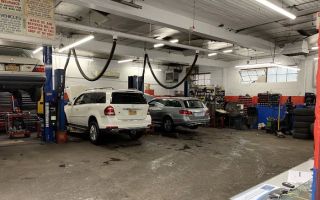How to Repair a Faulty Ignition Coil in Your Car: A Comprehensive Guide
1. Understanding the Ignition Coil and Its Role in Your Car
One morning, I found myself frustrated when my car refused to start. The engine cranked, but there was no sign of it firing up. After some troubleshooting, I realized the issue was with the ignition coil. As someone who likes to get my hands dirty and fix things myself, I decided to take on the challenge of repairing it. If you’ve ever experienced misfires, rough idling, or poor acceleration, you might be dealing with a faulty ignition coil as well. Let me walk you through the process of identifying and repairing it.
The ignition coil is an essential part of your car’s ignition system. Its job is to convert the 12 volts from your car’s battery into the high voltage needed to create a spark at the spark plugs. This spark is what ignites the air-fuel mixture in the engine’s cylinders. Without a functioning ignition coil, your car won’t start, and even if it does, it won’t run smoothly. Understanding how this part works and what to look for when it’s malfunctioning is key to getting your car back in top shape.
2. Signs of a Faulty Ignition Coil
Before I even started the repair, I needed to confirm that the ignition coil was the culprit. Over the years, I’ve learned that diagnosing a faulty ignition coil can save a lot of time and money. Here are some common signs that I’ve personally encountered, and you might be facing these as well:
- Engine Misfires: This is the most obvious sign of a faulty ignition coil. When the ignition coil is malfunctioning, it fails to deliver the necessary spark to the spark plugs, leading to an engine misfire. I’ve experienced rough idling and hesitation when trying to accelerate, all of which pointed to a misfire.
- Reduced Power and Acceleration: Another sign I’ve come across is poor acceleration. When the ignition coil isn’t working properly, the engine has to work harder to reach speed, leading to sluggish performance.
- Check Engine Light: A lit check engine light is a clear indicator of an issue with your car, and a faulty ignition coil can trigger this. I remember one time when the light came on, and after scanning the codes, the issue was a bad ignition coil.
- Backfiring or Stalling: If you’ve ever heard your car backfire, you might know the feeling of panic it causes. A failing ignition coil often causes incomplete combustion, leading to backfiring and stalling.
- Increased Fuel Consumption: I also noticed that when the ignition coil was going bad, my car’s fuel efficiency dropped. This happens because the engine is working harder to compensate for the lack of spark, using more fuel in the process.
If you’ve noticed any of these symptoms, it’s time to take a closer look at the ignition coil. In my case, it was evident that the coil needed to be replaced. However, if you’re unsure, it’s always good to perform some tests to rule out other possible issues.
3. Tools You’ll Need for the Job
Before diving into the repair, I made sure I had all the right tools. I learned the hard way that being prepared can make the job go smoother and prevent frustration. Here’s a list of the tools I used, which I recommend for anyone looking to tackle this task:
- Socket Wrench Set: You’ll need a socket wrench to remove the screws holding the ignition coil in place. I used a 3/8-inch drive ratchet wrench with various socket sizes, but you’ll probably only need a 10mm socket for most models.
- Screwdrivers: A flathead screwdriver comes in handy for removing clips and gently prying off the ignition coil in some vehicles.
- Torque Wrench: When reinstalling the ignition coil, I always make sure to torque it to the manufacturer’s specifications. A torque wrench ensures the parts are tight enough without being over-torqued.
- Multimeter: This tool helps me test the ignition coil’s resistance to determine if it’s faulty. A good multimeter can save you a lot of time and help you diagnose the issue accurately.
- Replacement Ignition Coil: Of course, the ignition coil itself. I always make sure to get one that matches the specifications of my car’s make and model.
- Dielectric Grease: This is used to prevent moisture from damaging the ignition coil connections and ensure the components don’t corrode.
Having the right tools is key to making the repair easier and more effective. I suggest you gather all the necessary equipment before starting the job, so you don’t have to stop halfway through to look for something you missed.
4. Step-by-Step Guide to Replacing a Faulty Ignition Coil
Now that I was prepared with all the tools, it was time to get started on the repair. Here’s the step-by-step process that worked for me, and I believe it will work for you as well:
- Step 1: Disconnect the Battery: The first thing I always do when working on electrical components is disconnect the car battery. This is a safety measure to prevent any electrical shocks or accidental short circuits.
- Step 2: Locate the Ignition Coil: Depending on your car’s model, the ignition coil is usually located near the top of the engine. I popped the hood and found the ignition coil near the spark plugs. In some cases, you may need to remove an air intake or other components to access it.
- Step 3: Remove the Coil: Once I located the ignition coil, I removed the bolts that were holding it in place. In some cases, a clip or other securing mechanism will need to be removed before the coil can be taken out. Gently pull the coil out of its socket, and disconnect the wiring harness attached to it.
- Step 4: Test the Ignition Coil: Before replacing the coil, I always test it with a multimeter to confirm that it’s faulty. By checking the resistance, I can verify that the coil is not within the manufacturer’s specifications. If it’s out of range, that’s a clear sign it needs replacing.
- Step 5: Install the New Ignition Coil: With the old coil out, it was time to install the new one. I applied a small amount of dielectric grease to the terminals of the new coil to prevent corrosion. Then, I carefully inserted the new coil into its socket and connected the wiring harness.
- Step 6: Reassemble and Test: After tightening the ignition coil into place, I reassembled any components I had to remove to access the coil. Once everything was back together, I reconnected the battery and started the engine to ensure the new coil was working properly.
Throughout this process, I made sure to follow the manufacturer’s instructions for my vehicle to avoid any mistakes. The new ignition coil fixed the issue, and my car started running smoothly again. It’s always satisfying to fix a problem yourself, and replacing the ignition coil was no exception.
5. Additional Tips for Maintaining Your Ignition System
After the repair, I took a moment to reflect on what I could do to prevent future ignition coil problems. Here are a few tips I’ve found helpful for maintaining your ignition system and keeping it running smoothly:
- Regularly inspect your ignition components: Every few months, I check the condition of my ignition coils, spark plugs, and wiring. Early detection of any issues can save you from more serious problems down the road.
- Replace spark plugs as needed: Worn-out spark plugs can strain the ignition coil, causing it to fail prematurely. I make sure to replace the spark plugs as recommended by the manufacturer.
- Avoid overloading the electrical system: I also avoid overloading the electrical system of my car. Using high-power accessories without ensuring the electrical system is equipped to handle them can put undue stress on the ignition system.
By staying on top of maintenance, I’ve been able to avoid more serious issues and keep my car in great shape for longer.
6. When to Seek Professional Help
While I’ve been able to repair the ignition coil myself, I know that some people might not feel comfortable taking on such a task. If you’re not confident in your skills or if the issue seems more complex, it’s always a good idea to seek professional help. Services like Rescue & Towing can provide expert diagnostics and repair, ensuring your car runs smoothly and safely.
Whether it’s a faulty ignition coil or any other issue with your car’s electrical system, professionals can help you avoid the hassle and get you back on the road quickly.


























